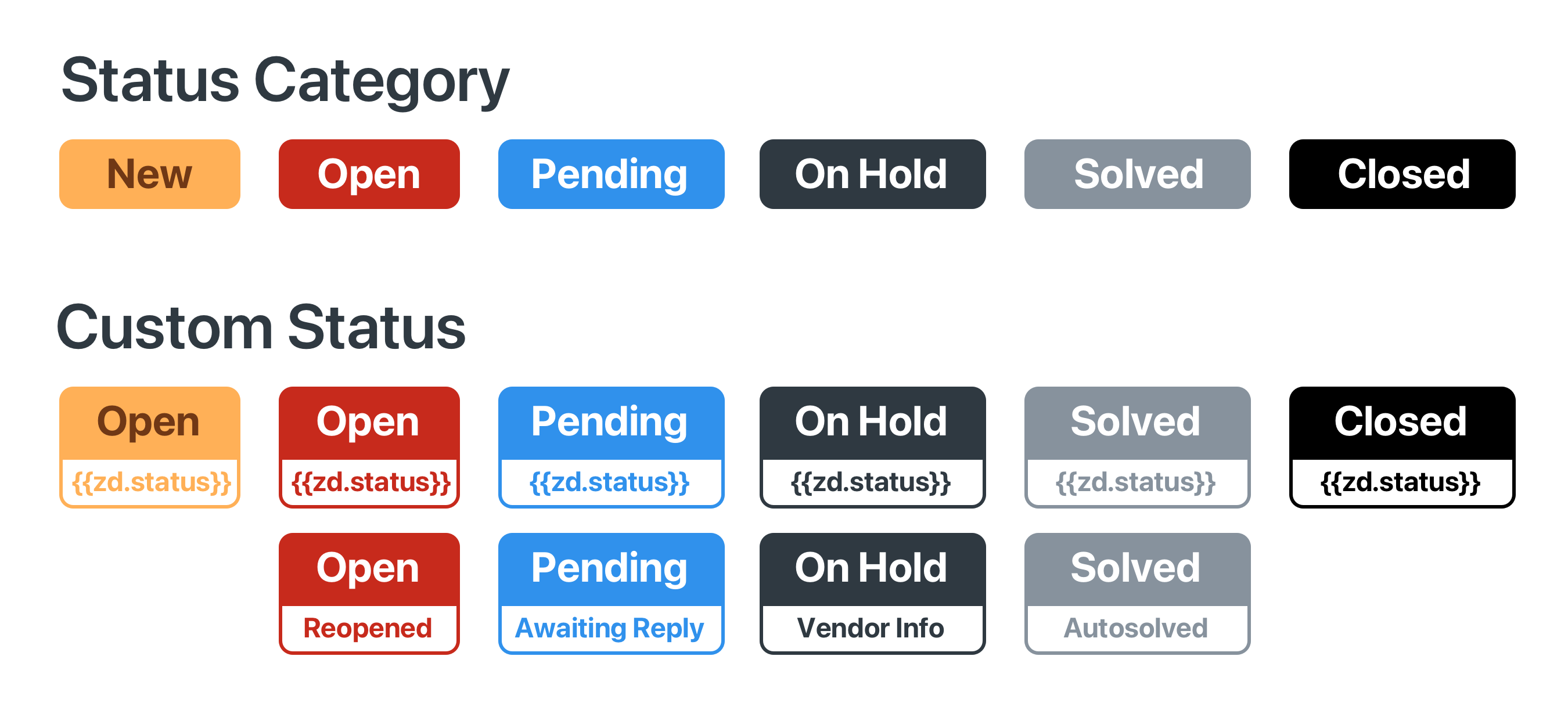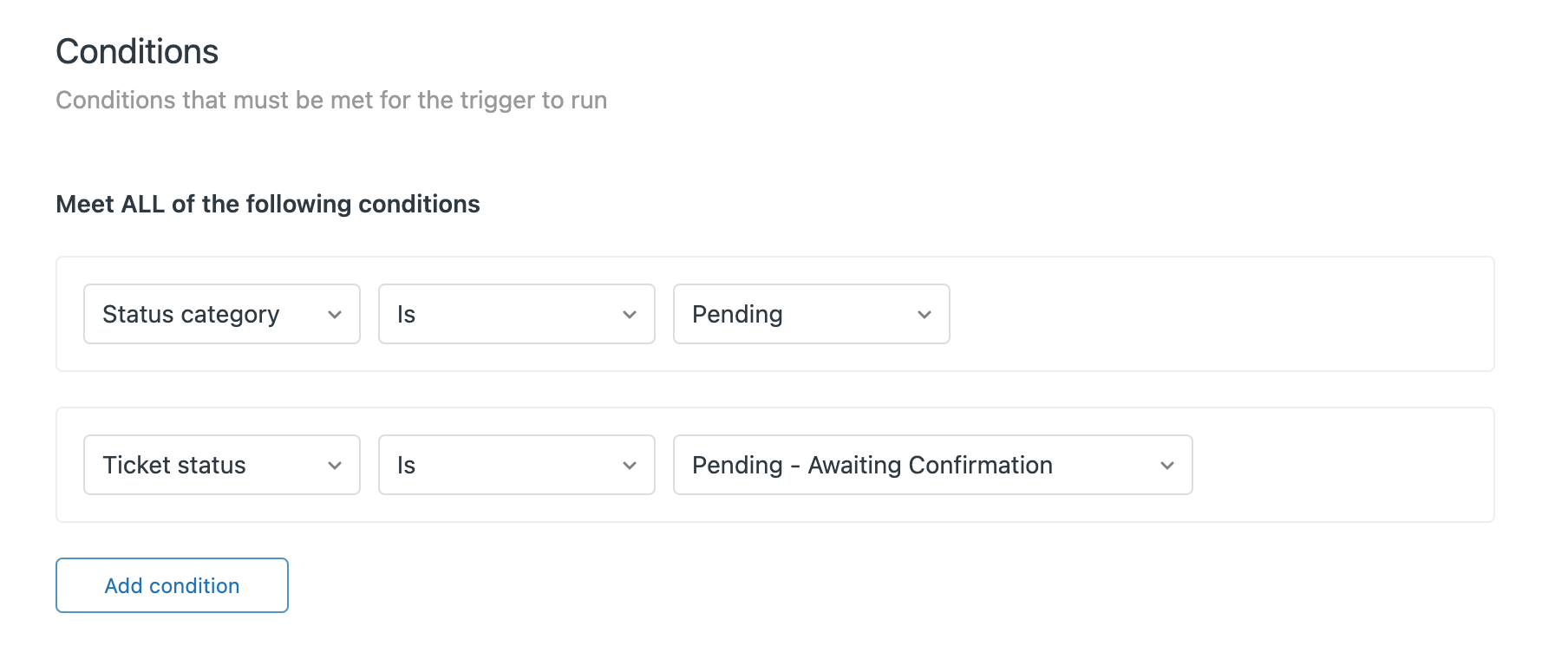
Custom Ticket Status API exploring
Exploring the technical side of Custom Statusses
With the release of Custom Statuses Zendesk opened a whole new way of working for agents, made triggers and automations a lot easier to create and turned a static system with six ticket statuses into a dynamic system.
The migration
First off, from a technical standpoint it’s important to know that Custom Statuses are a subset of your existing statuses.
What we used to call Status is now called a status_category and the new Custom Status is a custom_status


This means that where triggers, views, macros and automations used to have a Status condition in their parameters, that dropdown has now been renamed to Status Category. This happened automatically.
All those settings now also refer to a Custom Status condition. That one contains all new custom statuses. By default custom statuses contain six Zendesk statuses but you can (and should) add your own.






